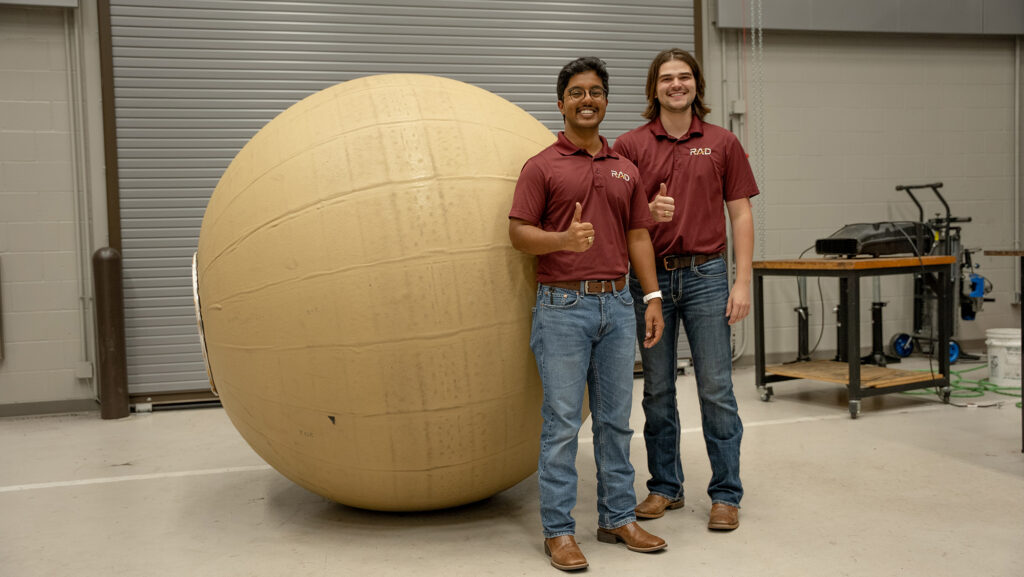As we close in on the third anniversary of ChatGPT’s release to the world – November 30, 2022 – the chatbot, along with others like it, is well on the way to transforming the world as we know it.
My only hope is they don’t screw it up.
On the plus side, after nearly three years of turning to ChatGPT for writing, brainstorming – and research that can be confirmed with hotlinks – the magic of ChatGPT is still as fresh as the day it was born.
No matter how many times I type a question or prompt into ChatGPT or similar AI, its ability to respond with often incredibly insightful and artfully written prose still feels fantastical to me.
Unfortunately, AI makers have taken to mixing that verifiable magic with a healthy dose of smoke and mirrors, leaving many users wondering: What’s real and what’s snake oil?
As the new year unfolded, for example, we were promised that 2025 would be the ‘Year of the AI Agent,’ a wondrous new AI application that would work autonomously on our behalf, completing multi-step tasks for us without the need of supervision.
Instead, we were given AI’s version of vaporware: Extremely unreliable applications that often only get part of the job done, if we’re lucky — or worse, report back to us that the task we assigned was simply too difficult to complete.
Meanwhile, the release of ChatGPT-5, pre-packaged as ‘Beyond AI’s Next Big Thing,’ landed with a thud, sporting an AI personality so bland and off-putting, its maker raced to reinstate the earlier version it was supposed to replace – ChatGPT-4o – lest scores of ChatGPT users jumped ship.
The problem with repeatedly burning consumers with those kinds of empty promises is that they often walk away in complete disgust, characterizing the companies behind the digital head-fakes as charlatans not worth dealing with on any level.
And with AI, that’s the real crime.
OpenAI, Google, Anthropic, xAI and similar – they truly have come up with incredibly dazzling technology that if released in the late 1600s probably would have been seen as the work of witches.
But if they continue to mix the proven magic of AI with ‘wouldn’t it be nice’ ideas portrayed as ‘finished products you can trust,’ they risk discrediting the entire industry — and setting back the widespread adoption of AI by business and society by years.
As an avid, daily user of AI who deeply appreciates what AI can actually do, I truly hope that does not happen.
In the meantime, here are the stories that emerged in Q3 that helped drive the aforementioned trend – as well as a number of bright spots:
*ChatGPT’s Top Use at Work: Writing: A new study by ChatGPT’s maker finds that writing is the number one use for the tool at work.
Observes the study’s lead researcher Aaron Chatterji: “Work usage is more common from educated users in highly paid professional occupations.”
Another major study finding: Once mostly embraced by men, ChatGPT is now popular with women.
Specifically, researchers found that by July 2025, 52% of ChatGPT users had names that could be classified as feminine.
*Bringing in ChatGPT for Email: The Business Case: While AI coders push the tech to ever-loftier heights, one thing we already know for sure is AI can write emails at the world-class level — in a flash.
True, long-term, AI may one day trigger a world in which AI-powered machines do all the work as we navigate a world resplendent with abundance.
But in the here and now, AI is already saving businesses and organizations serious coin in terms of slashing time spent on email, synthesizing ideas in new ways, ending email drudgery as we know it and boosting staff morale.
Essentially: There are all sorts of reasons for businesses and organizations to bring-in bleeding edge AI tools like ChatGPT, Gemini, Anthropic, Claude and similar to take over the heavy lifting when it comes to email.
This piece offers up the Top Ten.
*ChatGPT-Maker Brings Back ChatGPT-4o, Other Legacy AI Engines: Responding to significant consumer backlash, OpenAI has restored access to GPT-4 and other legacy models that were popular before the release of GPT-5.
Essentially, many users were turned-off by GPT-5’s initial personality, which was perceived as cold, distant and terse.
Observes writer Will Knight: “The backlash has sparked a fresh debate over the psychological attachments some users form with chatbots trained to push their emotional buttons.”
*ChatGPT Plus Users Get Meeting Recording, Transcripts, Summaries: Users of ChatGPT Plus can now use the AI to quickly record meetings – as well as generate transcripts and summaries of those meetings.
Dubbed ‘Record Mode,’ the feature was previously only available to users of higher-tier, ChatGPT subscriptions.
Observes writer Lance Whitney: The AI “converts the spoken audio into a text transcript. From there, you can tell ChatGPT to analyze or summarize the content — and ask specific questions about the topics discussed.”
*New Claude Sonnet 4.5: 61% Reliability in Agent Mode: Anthropic is out with an upgrade to its flagship AI that offers 61% reliability when used as an agent for everyday computing tasks.
Essentially, that means when you use the Sonnet 4.5 as an agent to complete an assignment featuring multi-step tasks like opening apps, editing files, navigating Web pages and filling out forms, it will complete those assignments for you 61% of the time.
One caveat: That reliability metric – known as the OSWorld-Verified Benchmark – is based on Sonnet 4.5’s performance in a sandbox environment, where researchers pit the AI against a set of pre-programmed, digital encounters that never change.
Out on the Web – where things can get unpredictable
very quickly — performance could be worse.
Bottom line: If an AI agent that finishes three-out-of-every-five tasks turns your crank, this could be the AI you’ve been looking for.
*Skepticism Over the ‘Magic’ of AI Agents Persists: Despite blue-sky promises, AI agents – ostensibly designed to handle tasks autonomously for you on the Web and elsewhere – are still getting a bad rap.
Observes writer Rory Bathgate: “Let’s be very clear here: AI agents are still not very good at their ‘jobs’ — or at least pretty terrible at producing returns-on-investment.”
In fact, tech market research firm Gartner is predicting that 40% of agents currently used by business will be ‘put out to pasture’ by 2027.
*AI Agents: Still Not Ready for Prime Time?: Add Futurism Magazine to the growing list of naysayers who believe AI agents are being over-hyped.
Ideally, AI agents are designed to work independently on a number of tasks for you – such as researching, writing and continually updating an article, all on its own.
But writer Joe Wilkins finds that “the failure rate is absolutely painful,” with OpenAI’s AI agent failing 91% of the time, Meta’s AI agent failing 93% of the time and Google’s AI agent failing 70% of the time.
*Coming Soon: ChatGPT With Ads: If you’re a ChatGPT user who has oft-looked wistfully at the platform and fantasized, “If only this thing had ads,” you’re in luck.
Observes writer Andrew Cain: “OpenAI is building a team to transform ChatGPT into an advertising platform, leveraging its 700 million users for in-house ad tools like campaign management and real-time attribution.
”Led by ex-Facebook exec Fidji Simo, this move aims to compete with Google and Meta, though it risks user trust and privacy concerns.
”Rollout is eyed for 2026.”
*Google’s New ‘Nano Banana’ Image Editor: Cool Use Cases: The fervor over Google’s new image editor continues to rage across the Web, as increasing numbers of users are entranced by its power and surgical precision.
One of the new tool’s most impressive features: The ability to stay true to the identity of a human face – no matter how many times it remakes that image.
For a quick study, check-out these videos on YouTube, which show you scores of ways to use the new editor – officially known as Gemini 2.5 Flash Image:
–Google Gemini 2.5 Flash Image (Nano Banana) – 20 Creative Use Cases
–15 New Use Cases with Nano Banana
–The Ultimate Guide to Gemini 2.5 Flash (Nano Banana)
–New Gemini 2.5 Flash Image is Insane & Free
–Nano Banana Just Crushed Image Editing
*Grammarly Gets Serious Chops as Writing Tool: Best known as a proofreading and editing solution, Grammarly has repositioned itself as a full-fledged AI writer.
Essentially, the tool has been significantly expanded with a new document editor designed to nurture an idea into a full-blown article, blog post, report and similar – with the help of a number of AI agents.
Dubbed Grammarly ‘Docs,’ the AI writer promises to amplify your idea every step of the way – without stepping on your unique voice.
Share a Link: Please consider sharing a link to https://RobotWritersAI.com from your blog, social media post, publication or emails. More links leading to RobotWritersAI.com helps everyone interested in AI-generated writing.
–Joe Dysart is editor of RobotWritersAI.com and a tech journalist with 20+ years experience. His work has appeared in 150+ publications, including The New York Times and the Financial Times of London.
The post Top Ten Stories in AI Writing, Q3 2025 appeared first on Robot Writers AI.
 Rishi Jangale and Derek Pravecek with RoboBall III. Image credit: Emily Oswald/Texas A&M Engineering.
Rishi Jangale and Derek Pravecek with RoboBall III. Image credit: Emily Oswald/Texas A&M Engineering.


